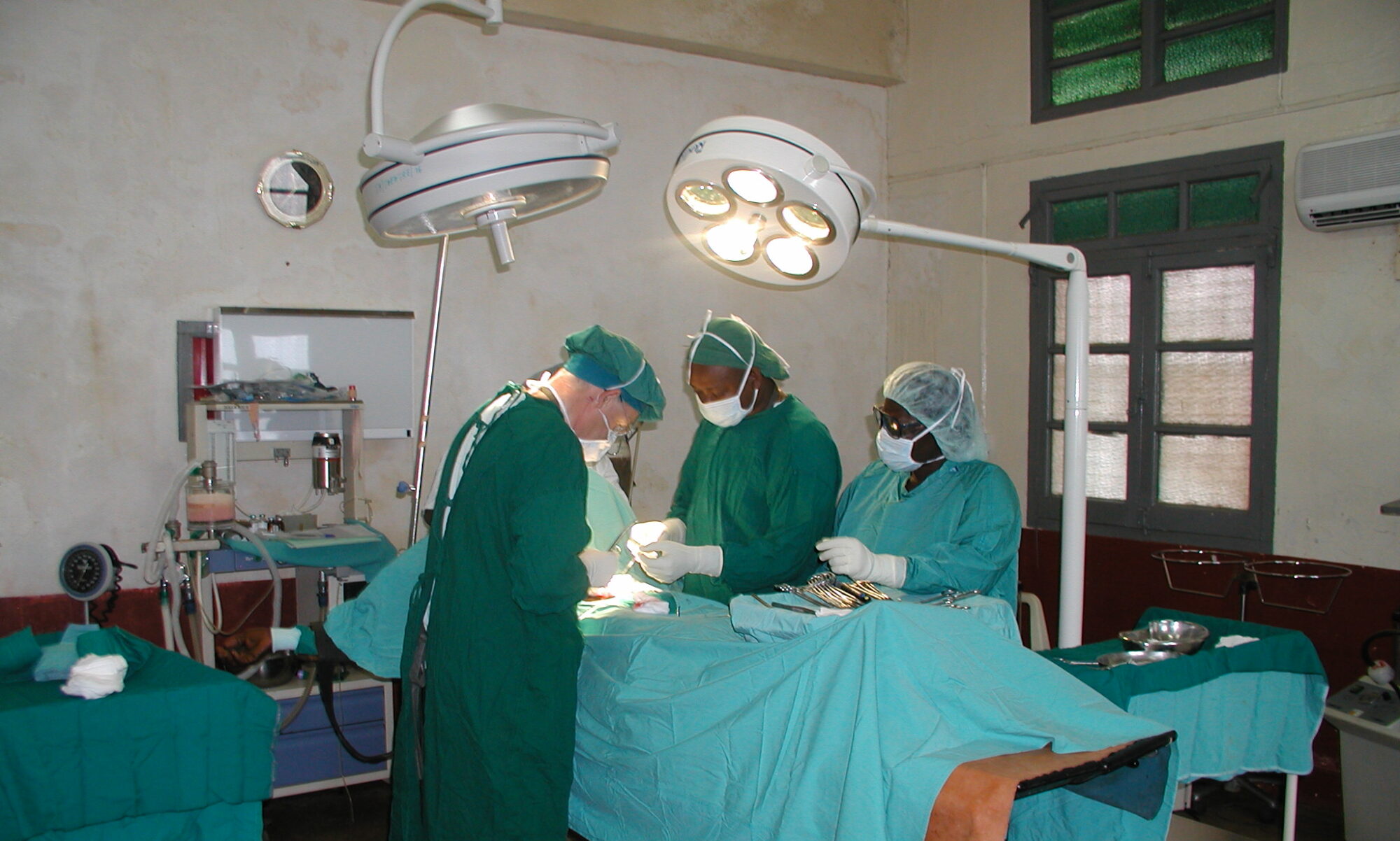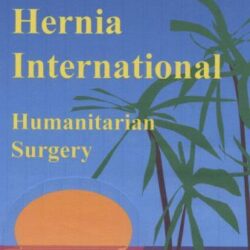CAMPAIGN IN FARAFENNI (GAMBIA), MARCH 2018.
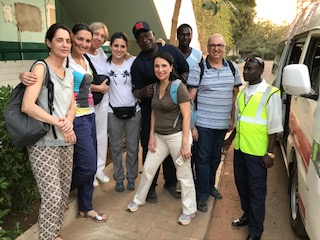
After months of preparation and bureaucracy, on Saturday March 10, We, the Spanish team of “Cirujanos en Acción” in collaboration with Hernia International, started our mission in Farafenni (The Gambia). Two groups of people travelled to Banjul from Barcelona and Madrid: Pepa Fornier (nurse at the Hospital Materno-Infantil, Badajoz) and Inmaculada Vílchez (nurse at Hospital Universitario La Fe de Valencia), Ana Arnalich (anesthesist at Hospital Universitario Gregorio Marañón, Madrid), Asuncion Azpeitia and Nagore Solaetxe (paediatric surgeons at Hospital Universitario de Cruces de Barakaldo) and Antonio Satorras (general surgeon, Hospital da Costa, Lugo). We arrived in Banjul at night. Once there, we could enjoy the smell of Africa and see an incomparable starry sky. We were received by Mr Sainey Dibba (the public relations officer of the Farafenni General Hospital) and by Amadou (our driver). We spent our first night at Grand Villa Guest House, a nice colonial style place near the airport.
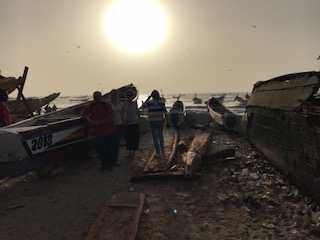
After a short night, only altered by the imam calling to prayer, we met Mr Wandifa Samateh, Chief Executive Officer of the FGH, and we set off to our destination. We travelled along the Gambia river in a crowded old ferry. The trip lasted over two hours due to the blowout of a wheel. Eventually, we arrived at the AFPRC Farafenni General Hospital, where we were introduced to part of the local team. There are no local doctors there. That is why nurses and technicians as well as a few doctors from Cuba are responsible for the things done there. It was in that place where we had our first hot meal. As regards the facilities in the hospital, I would like to highlight the fact that there are 160 beds available, as well as two poorly equipped operating rooms. We had at our disposal the biggest one, in which there was enough room for three tables. However, there was only a real surgical table and there were just two stretchers. There was only a surgical light and an old anesthesia machine, which worked with Halothane. There was only one oxygen tank and power cuts were very frequent, so we needed to make use of our front lights.
Near two hundred kilos of materials and drugs were brought by us, including a diathermy. I would like to mention that on the one hand, we could use another local Valleylab. On the other hand, intravenous fluids were provided by the hospital. Anyway, the equipment and materials were not in good condition either (gowns, sheets and gauzes were sterilized in an autoclave there, and were often wet).
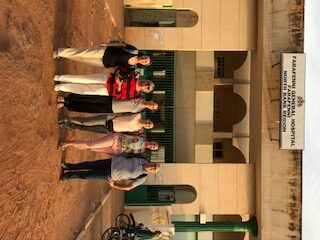
After a tiring day, we went to our hotel, the Mone Berre Lodge, near the hospital. Its spartan rooms did not comply with the minimum hygienic conditions. However, there was air-conditioning, Wi-fi connection, there were also mosquito nets and cold beers. Anyway, Rastaman (the owner) made an effort to make our stay enjoyable speaking to us and playing Reggae music.The next day, we had breakfast at the hospital at 7.30 a.m. and at 8.00 a.m. we began to work. The Spanish campaign had been announced by the media, then a lot of patients, without previous selection, started arriving at the hospital. Some of them had to be refused. Nobody had gone through a preoperative study, and there was no time nor a possibility to do so. Almost nobody spoke English, but we had Mandinga and Wolof (the main local languages) translators at our disposal. Finally, after doing a first selection and solving some new technical problems, we could start with the surgery. Yudelines Denis (a Cuban General Surgeon) and Luís Anglada (a Cuban Anesthetist Technician) who work at the Medical Centre, were of great help for us as they started working partially as part of our team. They explained to us about the local idiosyncrasy and the African way of doing things. Thanks to their help, we could operate eleven patients (both adults and children) who were suffering from a total of 13 pathologies. This way, we put an end to the first but exhausting working day. It was a bit later that we were told those patients had to stay at a recovery room without any monitoring system and without any qualified medical staff. That is why while we stayed there we tried to teach the local staff as much as we could though the results were not as good as expected.
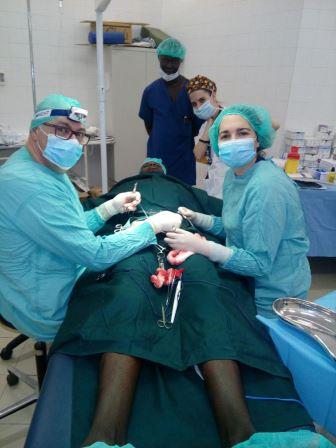
At cockcrow and the call to prayer we began a new working day. We were picked up and driven to the hospital at the fixed time. The meals were made by a local cook. Breakfast and lunch at the hospital and dinner at the hotel were served for six euros per person a day. We could eat rice with vegetables and a different side dish every day. The food was very tasteful. But the hygienic food storage and preparation was not the best.
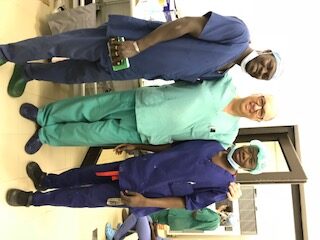
We decided to establish some rules so that the patients who were going to be operated had to arrive shaved and washed to the surgery. The working pace, there, is different from the one we are used to and for that reason only a maximum of twelve patients could be operated a day (3 per turn and team). Those were from Gambia and Senegal. They were mostly men. It seemed to us that women did not require our services… Nevertheless, women came to bring their children (who usually suffered from malnutrition). Medical treatments were cheaper than usual there but not free; and almost everybody had to remain hospitalized for a night. In case any of them required a check-up to remove the drain, they had to stay at one of their relatives’ house and could come back to see us two days later.
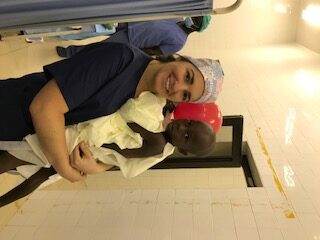
We had to be really careful in order not to be infected with AIDS or hepatitis. Then, wearing double gloving was recommended by local doctors.Despite having informed the Head of the hospital about the members of our team thoroughly, the number of pediatric patients was very low. It was a pity they missed the opportunity of being helped by the two experienced and available pediatric surgeons. On Thursday, we were astounded as only a few people attended the medical practice. There were only six people to be operated, so we had a free afternoon and we could visit the Farafenni’s market.
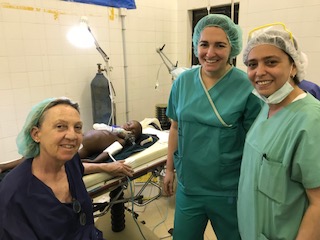
Although they had organized surgical activity for us to do until Friday morning, we decided to work later the last afternoon to help as many patients as possible before we left. On Friday night, they celebrated a farewell dinner (both surgery staff and management staff attended it). They were very grateful to us and so they gave some speeches to let us know.

On Saturday just before coming back, we visited the Wassu Stone Circles, a megalithic and world heritage monument of the UNESCO, and the old slavery place of Jamjamboreh. On the road, our van broke down and we had to wait four hours for another one to arrive. Then, the trip lasted 3 hours at night. The cars had no lights. We travelled in a crowded ambulance along dark roads. On the way, we met risky pedestrians, free animals (a run-over sheep), and dozens of police controls. Luckily, in the end we arrived at Leybato Beach Hotel where we were able to rest in appropriate conditions. On Sunday we could visit a crocodile pool at Kachikaly, we could also see monkeys at the Banji National Park, we could go on a boat ride through the mangroves and to the fish market in Tanji. At night we took our flight. A stopover at the airport in Casablanca allowed us to visit the city for a while. Finally, we arrived in Madrid save and sound.

The final result of the campaign has been very positive. We assisted fifty-three patients in total with sixty-one processes due to double pathologies. I would like to highlight not only the number of patients we had assisted (41 adults and 12 children, aged between 1 and 5. Most of them (48) were male) but also the human and technical quality we could offer with the limited resources we had. Regional anesthesia was used in 35, general in 14 and 4 were done under local anesthesia. Inguinal hernia, some of them giant, was operated in 38 patients; mesh hernioplasty was done in all adults. 12 hydroceles, 4 umbilical hernia, a non-descended testicle and 6 lipoma were also treated. Only one hydrocele patient needed a review after early hematoma. All the others went right.

Expenses other than plane tickets were 16€ for accommodation and 8€ for meals per person and day. Lots of water bottles were included. We had no other expenses apart from tips, excursions and last-minute gifts.Once the mission has finished, we think that it would have been better a duration of two weeks, because when things started to work well, we had to go. Perhaps, with more time we could have taught better to the local staff, some of whom were very willing and eager to learn. But this will be on future visits.
Antonio Satorras
